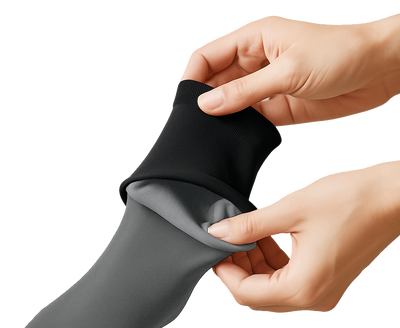November - Diabetes awareness month

November is dedicated to diabetes and all the questions we have about it. It is not only a diabetes awareness month; November 14th is also a World Diabetes Day. For that reason, we decided to get involved, answer some questions about diabetes, and give you some ideas on how to get involved and spread the word!
Why is November 14th World Diabetes Day?
On this date 1891, Frederick Banting was born. He was a man who discovered insulin alongside his partner, Charles Best. As you may know, insulin is a hormone that helps our body regulate blood sugar. Some people have a problem with their body producing or using insulin properly. This condition is called diabetes. Unregulated sugar then stays in the blood and can lead to serious problems.

Types of diabetes
There are different types of diabetes, but some are more prevalent than others. The most common ones are Type 1 diabetes and Type 2 diabetes. Type 1 diabetes occurs in about 10% of the cases, while most cases belong to the group of Type 2 diabetes. There is another 1 to 5 percent of cases that occur in other, rare forms of this disease.
What is Type 1 diabetes?
Type 1 diabetes is a chronic autoimmune disease in which the body is unable to produce insulin. In this case, a person’s autoimmune system attacks the insulin-producing cells, leaving the body with very little insulin or no insulin at all. When this happens, the sugar that we take from food is not regulated and it stays in the blood. When levels of sugar increase too much (hyperglycemia) or lower too much (hypoglycemia) the body can experience a lot of serious problems. Without this regulation that we get from insulin, a person is unable to break down taken sugar and use it as energy. This leads to Diabetic ketoacidosis or DKA. DKA happens when our body starts breaking down fat in the use of energy. This is a severe condition and it can lead to coma or even become lethal.
Type 1 diabetes is also known as juvenile diabetes, although both adults and children are diagnosed with it every year. It is NOT curable, and it is not caused by taking in too much sugar. It is caused by genetics and environmental triggers. People with Type 1 diabetes must take insulin for the rest of their lives. It is not contagious, nor harming to others.
Warning signs of Type 1 diabetes
|
Early symptoms:
|
Advanced stage symptoms:
|
Type 1 diabetes is not as recognized as Type 2. Signs of Type 1 diabetes are often mistaken for seasonal flu, infections and other problems with similar symptoms
What is Type 2 diabetes?
Type 2 diabetes occurs when the body is not able to use insulin properly. This condition is also known as insulin resistance. Unlike Type 1 diabetes, Type 2 is not a chronic autoimmune condition and it can be prevented and treated.
Even though there is not a certain factor that develops this disease, there are risks that could lead to it. Those risks could be:
- Unhealthy diet
- Unhealthy lifestyle
- Obesity
- Smoking
- Low physical activity
- Unhealthy habits
- Genetics
It is estimated that there are about 415 million cases of Type 2 diabetes globally. That number obtains about 90% of all forms of diabetes.
The warning signs of Type 2 diabetes are similar to symptoms of Type 1. They can also include tingling or numbness in limbs, slower healing of wounds and dark patches on the skin. Increased appetite and food cravings can also be a sign of diabetes.
Other types of diabetes
Other types of diabetes include gestational diabetes, LADA, MODY diabetes, brittle diabetes, steroid-induced diabetes, and others.
- LADA or Latent autoimmune diabetes in adults happens in adults usually older than 30 years. It is sometimes mistaken for Type 2 diabetes because of its slow progress. However, after some time, the pancreas stops producing insulin. This leads to a need for insulin injections, which is a characteristic of Type 1.
- Gestational diabetes occurs in pregnancy, in about 1 in 20 pregnant women globally. It affects both mother and child during that time. Every woman should be tested at about 24 weeks of pregnancy.
- MODY diabetes is a rare type of diabetes caused by a gene mutation. It has specifics of both Type 1 and Type 2. This makes it hard for an early diagnose.
There are even more alterations of all the given types. The distinctions between them are not very clear, so sometimes it is hard to set the right diagnosis.
Diabetes awareness month:
What is diabetes awareness color?
The diabetes awareness color is blue. The universal sign for diabetes awareness is a blue circle. Nevertheless, there is also a diabetes awareness ribbon that combines blue and grey.
Events and how to get involved
Diabetes awareness month 2018 was all about the family. Last year the focus was on gestational diabetes and pregnancy. This year it continues in that direction behind the same title “Diabetes and Family”, but it is yet uncertain where the focus will be heading.

However, here are some ideas on how to contribute and help share awareness:
- Wearing blue on every Friday of the month. You can also take a picture and put it on social media with the hashtag #bluefridays! This helps in spreading the word and shows solidarity. Don’t forget to wear blue on November 14th!
- The Big Blue Test: every year the Diabetes Hands Foundation gives you a chance to test and contribute. This is called the Big Blue Test and it is a nation-wide famous event! You will test your blood sugar level, then do approximately 15 minutes of exercise of your choice and then test again. Ultimately, you would share your results online. Every entry you take until the end of November will send a 1$ contribution to a nonprofit organization working in this sector.
- Fundraiser walks: JDFR and American Diabetes Association are organizing walks all around the country. There is also an option of a virtual walker if you cannot participate in person. This is a way of showing support and helping fundraise!
For more events, you can check on the National diabetes federation site, and see events near you!
Skineez Diabetes Socks
Over the years we have learned a lot about struggles with diabetes. That is why a long time ago we decided to include in our store a special product that could help diabetic patients. Today we are strong in selling it both online and in retail.

In our store, you will find hydrating diabetic socks for men and women. These are seamless socks with compression abilities made for relieving the pressure and preventing numbness. These socks fight nerve pain and reduce foot discomfort. Seamless cut helps blood circulation flow uninterrupted.
So why do we call them Diabetic socks?
These socks are not a medication and are not used for treating diabetes. However, they do increase the quality of life with those fighting discomfort and limb tingling. Their compression abilities help blood circulate in a natural way which prevents numbness and cold feet.
Besides that, these socks are perfect for the skin. They are infused with our magical formula of shea butter, rosehip oil, retinol, apricot kernel oil and vitamin A and E. All these ingredients help maintain youthfulness and elasticity of the skin. They prevent cracking and sensitivity while giving you the support you need.
We have them in two colors – white and black, and in two sizes: L/XL and S/M. You can treat yourself with a pair, or either get them to someone you love and show them your support this November. Check our online store for more hydrating compression products!



